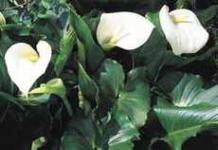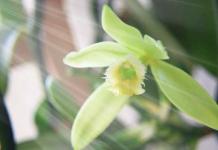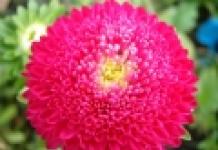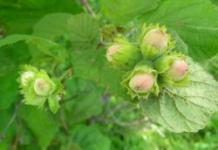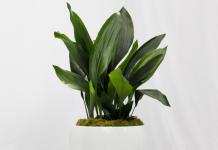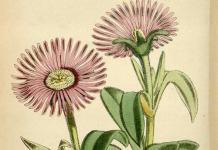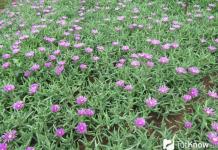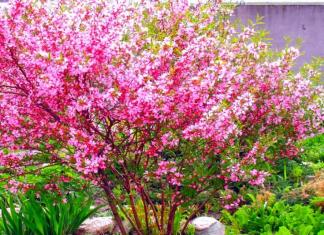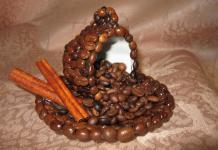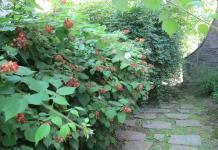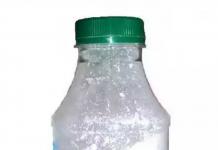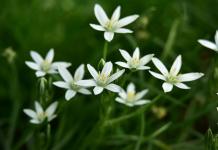Much has been written here on the topic of geranium diseases, here is a new selection with informative pictures - repetition is a mother, as you know, learning!
Geranium can be found in almost every home. Such popularity of the flower is due to its beauty and medicinal properties. However, its growth is often accompanied by a mass of problems and ailments. About what diseases occur in geraniums and their treatment with a photo in detail in this article.
Geranium, or scientifically pelargonium, is prone to a number of diseases and disorders:
- yellowing of the leaves;
- Lack of flowering;
- Drying of leaves;
- Mushroom Botrytis;
- Root rot;
- Leaf rust;
- bacterial disease;
- viral infections;
- Spotting of leaf plates;
- Edema.
The first three items on this list are more likely to be the results of violations in care, therefore, to eliminate them, it is enough to restore the correct handling of the flower.
10 Common Geranium Diseases
Yellowing leaves
With yellowing of the edges of the leaves, it is necessary to increase the amount of watering. Lack of moisture is the main cause of this problem. However, if yellowing is accompanied by general lethargy, then the volume, on the contrary, should be reduced. With a lack of lighting, only the lower leaves turn yellow.
To avoid the occurrence of this disease, it is necessary to provide not only the level of watering, but also the parameters of the pot in which it grows. Too narrow a pot does not allow the root system to develop, which leads to the death of individual sections of the flower.
Attention: if the leaves of the flower turn yellow after transplantation - do not be afraid - this is a normal side effect. The yellow areas just need to be removed, and the plant will begin to develop further.
No flowering

This problem worries flower growers to a greater extent, because It is because of the beautiful flowers that geraniums are acquired. But if it arose, then for one of the following reasons:
- Insufficient lighting;
- Low temperature;
- Too large pot (this leads to increased root growth and slower flowering);
- Excess fertilizer;
- Lack of nutrients in the soil;
- Insufficiency or lack of pruning.
The first two points can be eliminated with a conventional fluorescent lamp. And the question regarding the soil for geraniums should be studied separately and more carefully.
Leaves dry

The reason for the drying of the leaves should be looked for depending on the localization of the problem:
- Dried up the edges of the sheet - lack of water;
- The flower itself has dried up - a fungal disease.
To eliminate the fungus, it is necessary to water the plant with a 5% solution of Bordeaux composition. In addition to the solution, you can do Fitosporin treatment twice with a break of 7 days.
Mushroom Botrytis

The symptoms of this disease are quite specific, so it will be difficult to confuse it with another.
When the fungus appears, the plant is covered with gray spots and fluff. The flower itself becomes sluggish. Brown areas may appear on the stems. It is there, most likely, that rotting will occur, which will spread to the leaves and cause them to fall off. And the cause of the fungus is a banal excess of moisture.
To eliminate the fungus, it is necessary to carry out a number of recreational activities:
- Clean the soil from weeds and dead plant fragments;
- Loosen the soil to improve the processes of absorption and drying;
- Remove affected flower fragments;
- Carry out chemical treatment with fungicides.
Important: to improve the absorption and drying of the soil, it is recommended to water the geranium in the morning, no later than 11 o'clock.
Root rot

Pelargonium roots begin to rot as a result of infection with a fungus. This is manifested by yellowing of the leaf plates. Then the yellowed areas become brown and black in places. The plant itself is covered with a light-colored bloom resembling a cobweb.
- loosen the soil;
- Eliminate fertilizers with a high nitrogen content;
- Remove diseased leaves and stems;
- Use fungicides for wet soils.
leaf rust

The disease is manifested by the appearance of zones of rusty-yellow zones on the leaves. Often there are pads that release spore powder when opened. If the plant is completely affected, it becomes lethargic and begins to crumble. In the last stages, general decay and blackening of the flower occurs.
It is possible to cure a plant only in the initial stages of the disease, before the appearance of blackening. Treatment involves the implementation of several procedures:
- Removal of weeds and dead plants;
- Bottom watering;
- The use of fungicides.
In other words, maximum sterility in care and the use of chemicals to combat fungal diseases will avoid many problems and diseases.
bacterial disease

The onset of the disease is provoked by microbes and is manifested by brown spots in the shape of a triangle. The color can range from dark yellow with dark streaks and spots to brownish black. The affected areas begin to dry, and the whole plant withers.
To fix the problem, the following steps are taken:
- Soil cleaning. Ideally, it is better to replace the soil altogether, that is, transplant the flower into another pot with better soil.
- Water the plant in the morning.
- The use of fungicides. For geraniums growing in open areas, they are not needed.
Viral infections
Viral diseases are manifested by a variety of symptoms, ranging from stunting to the appearance of circular spots of brown-purple hues.
The treatment of viral infections practically does not differ from the methods of treating bacterial ones, but here it is necessary to pay attention to insects, because they are the carriers of the infection.
spotting

This disease is called Alternariosis and is manifested by the appearance of bubbles and spots on the underside of the leaf. Subsequently, the leaf becomes lethargic and begins to turn yellow, and then fall off.
Another disease characterized by leaf spotting is cercosporosis. With it, pale sunken areas appear on the leaves, which later turn gray. Then the affected areas turn brown and rise in the center.
This problem can be eliminated by removing all affected leaves, thinning out the shoots and treating with fungicides.
Edema

Pelargonium edema is characterized by the appearance of fluid-filled vesicles on the leaves. At first they have a light green color, and then they turn brown. The cause of edema is an excess of moisture and insufficiently high air and soil temperatures. In order to get rid of the symptoms, it is necessary to create optimal conditions for growth.
Prevention
Almost all diseases and problems of pelargonium arise due to violations in care, therefore, to prevent them, it is enough to follow simple rules:
- Observe the correct temperature regime;
- Control the humidity of air and soil;
- control lighting;
- Fertilize the soil regularly
- Control the occurrence of pathologies in the plant;
- Fight insects.

Among insects, special attention should be paid to the spider mite, whitefly and aphids. They often appear in places with dry air and are carriers of infection and viruses. If these insects were found in the room where the flowers grow, it is necessary to wash the plant and treat it with insecticides.
Indoor geranium is a beautiful and unpretentious plant that our grandmothers loved. Thanks to selection work, new varieties have appeared with the original shape of flowers and leaves, fantasy coloring, miniature and dwarf size.
However, the problems in growing remained the same - geranium diseases and pests invariably overtake the plant if the rules of care are not followed and agricultural practices are violated. However, you should not be afraid of them - it is enough to adopt methods of struggle and treatment that will be useful to both a novice and an experienced grower.
Most often, geranium suffers precisely from fungi and bacteria that multiply due to disruption of irrigation, high humidity, or an excess of nitrogen in the soil. The causes of infection can also be diseased bushes brought into the house without mandatory quarantine, as well as spores in a purchased substrate that has not been disinfected.
rust on leaves

This disease manifests itself as yellow and brown spots of various sizes that appear on the leaves. Quite often you can see pads with spores of the fungus, which, after opening, spread the infection to other plants.
Over time, the leaves dry on the diseased bush, and in the advanced stage, the bush throws off the deciduous mass and fades. If appropriate measures are not taken, the geranium begins to rot, blacken and completely dies.
Treatment of leaf rust is advisable only in the initial stages of the lesion using the following measures:
- Isolation of the plant from other bushes and complete removal of the affected parts;
- Watering geraniums only in the pan;
- The use of fungicides (colloidal sulfur, 0.5% solution of Bordeaux liquid);
- Treatment of bushes that were next to a diseased specimen with Acrex or Kratan suspensions.
It is important to observe maximum sterility so that the spores of the fungus do not spread to other flowers.
powdery mildew
Powdery mildew is a fungal disease, the main symptom of which is a powdery coating on the leaves, similar to flour. The first foci can be subtle, they appear randomly on the geranium leafy mass in the form of small spots. As the infection spreads, the entire plate is covered with plaque. The appearance of powdery mildew is promoted by increased humidity in the room, combined with high temperature.
Geranium treatment involves the complete removal of infected leaves and the isolation of the diseased plant from the rest, since powdery mildew is easily transmitted. Then the bush is treated with preparations:
- A solution of copper sulfate;
- ammonium nitrate;
- soda ash;
- 5% solution of laundry soap;
- colloidal sulfur;
- Any available fungicide.
Root rot and alternariosis

Root rot occurs due to the defeat of a geranium bush by a fungus. At risk are plants that suffer from an excess of moisture in the soil, frequent spraying, poor ventilation in the room or overfeeding with nitrogen.
You can notice the signs of damage by root rot on the leaves - they turn yellow, and then turn brown or blacken. Parts of the geranium are covered with a light cobweb-like bloom, the bush itself withers and withers.
Geranium affected by root rot can be saved if appropriate measures are taken:
- Eliminate top dressing of the bush with fertilizers with a high nitrogen content;
- Remove and completely destroy infected parts;
- Constantly loosen the soil, reduce watering;
- Treat the geranium with a fungicide (Bordeaux mixture, "Fundazol").
If the pelargonium continues to wither, it is recommended to transplant the plant with a complete replacement of the soil with a new one. It is important to sterilize the pot by dousing it with boiling water or by treating it with a solution of potassium permanganate. The root system must be carefully examined and all diseased roots removed.
Alternariosis manifests itself in the form of spots with a white coating, arising as a result of a long stay of geraniums in conditions of high humidity. If infection with this type of fungus is suspected, treatment with fungicides (Ridomil, Gold-M) is recommended.
Blackleg

This fungal disease affects the geranium stem - a dark spot first appears above ground level, and then spreads upward, provoking a bush fracture. The black leg often occurs due to too heavy soil, systematic overflow and lack of drainage in the pot.
The geranium bush affected by the black leg cannot be treated, but the variety can be saved. To do this, cut off the top or side stems of the plant for rooting. For the prevention of cuttings before planting, you need to soak in a fungicide solution.
Stem and root late blight
The causative agent of the disease is the phytophthora fungus. The main signs of the disease are wilting and curling of leaves, similar to a consequence of lack of water. It is not uncommon to see dark sunken spots that have appeared on the leaves or stem. With increased humidity on the spots there is a plaque in the form of a fluff.
The danger of late blight lies in its manifestation in the later stages, when the plant is no longer amenable to treatment. However, when infecting small areas of the geranium bush, you can try to save:
- Transplant into a new disinfected soil;
- Treat with the preparations "Previkur", "Profit Gold", "Ridomil";
- Reduce watering and reduce indoor humidity.
Bacterial rot and bacterial burns

The main symptom of bacterial rot is watery spots on the leaves, which dry out over time, but remain on the geranium. If signs of the disease are detected, it is necessary:
- Cut off all affected parts;
- Stop any spraying;
- Feed the plant with a high potassium fertilizer;
- Treat with Oxyx.
Bacterial burns are leaf lesions caused by various microorganisms. First, dry spots appear on the leaves, which are subsequently deformed. Withering in this case is characteristic - the leaves droop, resembling an umbrella.
Geraniums suffering from fire blight are stunted but not killed because the root system remains healthy. Pelargonium becomes infected through dirty tools, water, substrate or insects. The disease cannot be cured - the only thing you can do is to root the shoots that the disease has not spread to. The rest is better to burn completely. Since the burn can quickly "eat" geraniums, you should not wait for the leaves to turn completely yellow, but cut the bush immediately.
verticillium wilt
This disease is the scourge of large-flowered pelargoniums, which suffer from it most often. The signs of the disease are quite characteristic: the leaves do not wither completely, but most often in halves and even sectors. Subsequently, the affected plates dry up and remain hanging on the bush without falling off. If you cut the stem, you can see the browned vessels, while the roots of the plant do not suffer.
Many flower growers advise completely destroying bushes that are sick with verticillium wilt, without even leaving a pot. Plants that were next to infected geraniums should be treated with Gamair and Alirin-B preparations.
However, if the geranium variety is dear to you, and you want to keep it, it is worth fighting for a cure. First you need to isolate the bush from other plants, then remove all parts affected by wilting, disinfecting the tool. It is recommended to adjust the watering so that the soil retains moderate moisture and does not dry out. For processing, the drug "Trichodermin" is used. If the bush cannot be cured, burn it.
leaf spot

Spotting appears as dark green spots of a round shape, which subsequently turn brown. Their edge is often darker than the middle, and slightly raised, and in the center one can distinguish an olive-brown coating of sporangia.
Large-flowered pelargoniums and zonal hybrids that are in the garden in rainy weather or in a greenhouse with high humidity are prone to spotting.
Treatment methods for spotting are as follows:
- Decreased air humidity;
- Removal of affected leaves;
- Reduce spraying bushes;
- Treatment with "Fitosporin", "Gamair", Bordeaux mixture.
Viral diseases of geraniums with a photo
Viral diseases cannot be confused with anything - they leave a characteristic mesh pattern on geranium leaves. Plants are attacked by viruses more often in the cold season due to a decrease in natural immunity.
Although viral diseases affect the growth of pelargonium, slowing it down, this does not affect the lifespan of the bushes. The virus cannot be treated, so the grower must make an appropriate decision - to completely destroy the bush, remove the leaves painted with the disease, or continue to grow the affected specimen. If you still decide to leave the bush, move it to another place to avoid contact with other plants, in particular, with pelargoniums. Using the same pruning tools is also not recommended, as the chance of infecting a healthy bush is very high. Remember: the virus is easily carried by insects!
Dropsy
Dropsy is a physiological disease caused by improper conditions of detention, in particular soil overflow, low temperatures and high humidity in the room.
Mostly ivy-leaved pelargoniums suffer from dropsy, on the back of the leaves of which edematous swollen areas appear. It is possible to prevent the further spread of the disease by adjusting agricultural technology and conditions of detention:
- Reduce watering and spraying;
- Provide the plant with good drainage;
- Ventilate the room regularly.
The most common pests with photos
Healthy pelargonium is not the most "delicious dish" for various kinds of pests, but the situation changes in the opposite direction when the bush's defenses weaken. Improper watering, heavy soil, putrefactive processes provoke attacks of insects that damage and “finish off” geraniums. However, you can fight them - special preparations and other methods of eliminating pests will come to the rescue.
- Mite. It settles on the underside of the leaf plate and slowly eats it, which manifests itself in the form of yellowish specks that develop into extensive discolored areas.

Fighting methods: with a mild degree of damage, the plant is treated with a soapy solution, with a strong spread of the tick, spraying with Fitoverm, Akarin, Aktellik or other acaricides is necessary.
- Thrips. This small insect causes deformation of young leaves and growth points. Cork-like growths appear on the underside of the leaf plates. Spots appear on the blooming flowers, and the edges of the petals become brown. In the center of the buds, near the stamens, thrips breeds.

Fighting methods: for complete destruction, repeated application of insecticides at intervals of 5 days is necessary. Use drugs "Confidor", "Aktellik", "Aktara", "Fitoverm" and their analogues.
- Aphid. It provokes yellowing and twisting of the leaves into a tube. The insect settles on a geranium bush in large colonies and eats young shoots, leaves and flowers. Easy to see with the naked eye.
Fighting methods: affected shoots and leaves must be cut and destroyed. If the aphid has not yet had time to multiply strongly, treatment with soapy water will help. In case of severe damage, the preparations Actellik, Antitlin, Fitoverm, Iskra, etc. are used.
- Whitefly. The insect affects mainly large-flowered hybrids and royal pelargoniums. On the lower surface of the leaves you can see white larvae and the most adult insects 2-3 mm in size. The pest feeds on geranium juices, eating its tender leaves. The corroded plates turn yellow, sticky discharges appear on them.
Fighting methods: To get rid of the whitefly, the geranium must be made poisonous to the insect. To do this, the soil in the pot is spilled with Aktara (for plants up to 40 cm, the dosage is 1 g per 10 liters of water). Spraying is also carried out with "Confidor" (you need to cover with a bag and leave overnight) or "Teppeki".
- Mealybug. The pest hides under lumps of a white sticky substance that looks like cotton wool. Since the worm quickly moves to other plants, the bush must be urgently isolated when the first signs of damage are detected.

Fighting methods: you can remove the pest manually with a damp cloth, and then rinse with a soap-alcohol solution (20 ml of alcohol, 20 g of laundry soap per 1 liter of water). In case of severe infection, the use of insecticidal preparations (Aktellik, Aktara, etc.) is recommended.
- Caterpillars. This pest causes significant leaf damage in the form of gnawed areas. Often you can see traces of their life.
Fighting methods: the caterpillar can be easily assembled by hand, every evening inspecting the bushes. The biological and chemical insecticides Bicol, Lepidocid, Arrivo, Tzipi, Zolon are also used.
So that geraniums do not suffer from diseases and pests, follow all the rules of care and cultivation, as well as carry out preventive treatments. Be sure to send new plants to quarantine, especially if they were bought in a flower shop, and not from a private collector.
Before looking at what diseases can affect your favorite flowering geraniums and how to deal with them, let's look at other reasons why plants begin to wither. For example, external signs such as the appearance of brown spots on the leaves or the dropping of flowers may be associated with:
- Too small a pot, because of which the root system of the plant simply does not develop.
- Lack or lack of drainage in the tank.
- Drafts or lack of sunlight.
- Excess moisture during watering.
- Frequent application of nitrogen fertilizers, as a result of which green mass develops rapidly to the detriment of flowering.
- Deficiency of phosphorus or potassium in the soil.
withering geranium
To eliminate these factors, you just need to reconsider by putting in order watering and fertilizing. But to cope with diseases and their consequences is quite difficult. Let's take a closer look at how diseases can "attack" indoor geraniums and what methods against them are considered the most effective.
A frequent "guest" of geraniums is the Botrytis mushroom, which can appear at any time of the year and affects flowers of different ages. Most often, this fungus appears as a result of excessive watering or due to too humid air. Its main feature is a dark fluff that appears on the leaves or stem. At first, the spots are small, after a couple of days they begin to grow, which can lead to a complete infection of the flowers.
Preventive measures include cleaning the soil in a pot from weeds, removing all wilted flowers, competent watering - water should not stagnate in the ground. And during the watering itself, make sure that water does not fall on the leaves and flower buds. It happens that the mushroom appears as a result of too dense plantings, when individual flowers do not have enough ventilation. That is why, when planting geraniums, keep in mind that the distance between plants should be about 10 cm. Having noticed the sprouts affected by the fungus, remove them, and treat the flowers themselves with fungicidal agents.

Removing wilted geranium flowers
Another well-known fungal disease is root rot, which most often appears due to severe stagnation of water in the soil.
From the roots, the rot passes to the stem and leaves, the plant turns brown, the roots are usually covered with a gray coating, which is somewhat reminiscent of a cobweb. If you do not know how to deal with this disease, the plant will rot very quickly. The first thing to do is to improve the drainage in the tank. It is also worth replacing the soil mixture with a new, looser and air-permeable one, which will avoid stagnant water. At the time of the fight against the disease, it is worth abandoning the use of nitrogen-containing fertilizers. It is also worth removing all the affected parts of the flower and treating it with a suitable agent.
Unlike fungal diseases, bacterial diseases are caused by various disease-causing bacteria. Usually brown spots appear on the affected flowers, which at the very beginning of the disease are small and located on the back of the leaves. Another characteristic feature is the black veins of the leaves and their drying.

Pelargonium bacterial disease
If the disease becomes systemic (either manifesting or disappearing), the plant becomes very weak and lethargic, the branches gradually die, the stem turns black, and the flower eventually dries up. Prevention is simple: make high-quality drainage, monitor watering, use soil for planting that passes air and water well. Sick plants also need to be watered with fungicides. But if the stage is too thick, when there are no treatment options, the geranium will have to be burned so as not to infect the rest of the plants.
So, the most famous disease caused by "bacteria" can be called rust, when red spots form on the leaves, in the middle of which spores are located. If you do not know how to deal with the disease, it will very quickly absorb your favorite flowers and destroy them. The most effective anti-rust agent is copper sulfate - prepare a solution, tear off all infected leaves and pour the plant with the prepared mixture. To consolidate the result, repeat the treatment after a week.
Room geraniums, like any other plants, have quite a few enemies. For example, these are aphids, caterpillars, ants, whiteflies. We will talk about the most proven methods of pest control:
- Aspirin, which can be used in the fight against almost all pests. Simply dissolve one tablet in 1 liter of water and treat the flowers three times a week until all pests have been killed.
- Marathon considered a good remedy against whiteflies and aphids. This drug is convenient in that it does not need to be diluted in water, and the duration of its action is almost three months. Just sprinkle with granules Marathon flower pots and water.
- In the fight against such a pest as a caterpillar, you need to use a remedy Monterey. Just spray the flowers and buds with the liquid solution, after preparing it according to the instructions. For best results, repeat treatment after a week.

Spraying flowers with liquid solution "Monterey"
And to make geraniums more resistant to pests, diseases and their consequences in the form of poor growth and lack of flowering, be sure to use a remedy for prevention Messenger. This drug allows you to increase the immunity of flowers. Just dilute the product according to the instructions and water the soil. By the way, this drug will also help you with.
Geranium is very responsive to good care and, with the right actions, gardeners will delight with its bright flowering. But even with proper care, geraniums sometimes stop blooming. What to do in this case? The beginning of a long flowering of this plant is a competent content in the winter season. In winter, this plant prefers coolness and minimal watering. The cooler it was in winter, the longer the geranium will bloom in the summer.

geranium bloom
In April, the flower should be transplanted into a new pot and fed using potash fertilizers. To stimulate the development of new buds and further flowering, be sure to remove all faded inflorescences. Another important condition is high-quality lighting. In summer, it is advisable to put a pot of geraniums in a lit place, but at the same time so that direct sunlight does not fall on the plant - this will lead to burns. In winter, geraniums need to create artificial lighting for 4-5 hours every day. In the spring, the flower should also be cut, leaving 2-3 of the most powerful shoots.
Other reasons why your indoor flowers suddenly stopped blooming:
- Too large a pot, as a result of which the geranium develops its roots and does not have time to bloom.
- Too frequent watering can also lead to a lack of flowering of geraniums.
Experts say that geranium diseases, as a rule, begin to manifest themselves only if, under these conditions, the flowers feel uncomfortable. To fix the problem in this case, you should definitely consult with specialists. Today we will talk about the varieties of pelargonium ailments and consider the best methods for getting rid of them.
Pelargonium is a fairly well-known perennial plant, which is gaining more and more popularity every year. Keeping geraniums in a flower bed or at home is quite profitable, as the plant is unpretentious, resistant to drought and severe frosts. Without a transplant, pelargonium can bloom for at least 10-15 years, which cannot but attract the attention of gardeners who would like to simply and permanently plant their garden with perennials. Diseases and pests affect geraniums quite rarely, but even one incident can be enough for the complete death of the plant.
Before identifying pelargonium diseases, the causes of their occurrence should be studied. Experienced experts say that the most common cause of plant wilting is the so-called improper planting of pelargonium. It is related to the size of the pot in which the flower is planted. As we have said, geraniums can grow well for 10 years in one container. This only works if the pot is large enough to support the expansion of the root system. Otherwise, the plant stops its development, it gradually becomes lethargic and dull.
Often the problem of the appearance of pelargonium leaf disease is the lack of so-called drainage in the soil. With it, excess moisture is removed in case of excessive watering. It is known that geranium is not a lover of moisture. Watering should be done about once every 10 days at home. On hotter days, it is recommended to increase the volume and frequency of watering. Drainage will be able to independently regulate the flow of water to the roots of the plant.
Pelargonium is also known to be a South American plant. It is quite warm and light-loving. With insufficient lighting, geraniums can wilt and dry out very quickly. An equally common cause of a high incidence of geraniums are strong drafts. Leaning under the influence of the wind, pelargonium can slightly damage its thin stem. At the same time, harmful microorganisms (bacteria and fungi) begin to develop on the damaged area.
We must not forget about the overabundance of fertilizers applied to the soil. Quite often, fertilizers are not absorbed by the body, after which the reaction of decay in the soil begins. It can even affect the root of the plant. If there is even a small scratch on it, the geranium can be safely thrown away. This issue remains especially relevant when fertilizing with nitrogenous fertilizers. As a result, the so-called green mass appears in the soil, which can not in the best way affect the further development of geraniums.

Well, the last reason for the appearance of diseases and pests is the insufficient amount of phosphorus and potash fertilizers in the soil. Therefore, professionals recommend carefully monitoring the concentration of these elements in the substrate.
fungal diseases
Geranium pests can appear at any time of the year, regardless of the season and the nature of feeding. The most frequent guest of pelargonium is the well-known fungus called Botrytis. It affects flowers of any shade and any age. He is not picky in his choice, so if you have several geraniums planted in an open area and one of them has begun to become infected with Botrytis, it is better to transplant healthy plants to a safer place.

Most often, this type of fungus appears due to excessively humid climatic conditions. This does not mean that you should abandon the regular watering of geraniums, it just needs to be done in moderation. The fungus on plants, in particular, on pelargonium, manifests itself as a dark fluff, which, as a rule, settles on the leaves and stem of the geranium. At first, fungal spots are small, but after a couple of days you may not recognize your houseplant: it will turn completely brown and at the same time lifeless.
As a preventive measure, professionals recommend regularly reproducing the cleaning of the soil in a pot from weeds and other alien organisms. No less attention should be paid to the irrigation process itself. It is very important that the liquid seeps into the soil, while not settling on the leaves and stem.
Also, the fungus often appears in cases where the geranium needs a larger area, and, accordingly, the flowers lack ventilation. The main way to prevent such a problem is the correct planting of pelargonium. The intervals between flowers should be at least 15 centimeters, even if the sprouts are very small. If you notice that Botrytis has affected only certain parts of the plant, then you should carefully remove them and treat them with a special fungicidal preparation that is sold in any specialized store.

Root rot occupies a special place among the common fungal diseases of geranium. It appears due to prolonged stagnation of water in the soil. On the defeat of the root system, the process of decay does not stop. It gradually passes to the stem, leaves and even flowers. After a few days, your plant will lose its shape, become sluggish and simply fall over. The best method to prevent this problem is to install good drainage.
Symptoms and treatment
Unlike fungal diseases, bacterial diseases are caused by various harmful bacteria. As a rule, bacterial diseases appear in the form of brown spots on flowers. Often they are also found on the reverse side of the leaf blade. At first, the bacteria create tiny dark spots, but over time they fill the entire leaf area.
Another sign of the presence of harmful bacteria on the plant is the appearance of black veins on the leaves. After their appearance, you will notice the gradual drying of the leaves, and over time, the entire shoot.
It is worth noting that bacterial diseases can disappear on their own. Nevertheless, in this case, you should not rejoice too much, after a certain time the disease will manifest itself again and already with renewed vigor. For the second time, without additional treatment of geraniums, it is simply impossible to remove the bacteria. Experts recommend using fungicides in this case. Although they are designed to eliminate the fungus, these drugs can rid the geranium of bacteria.


